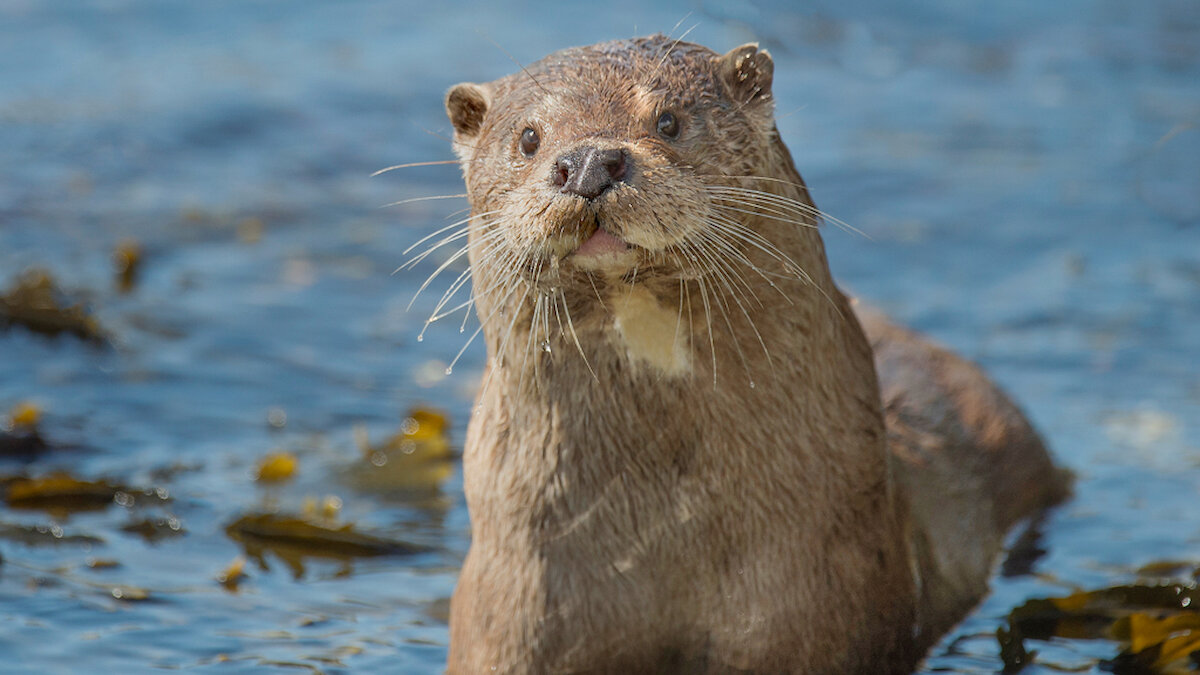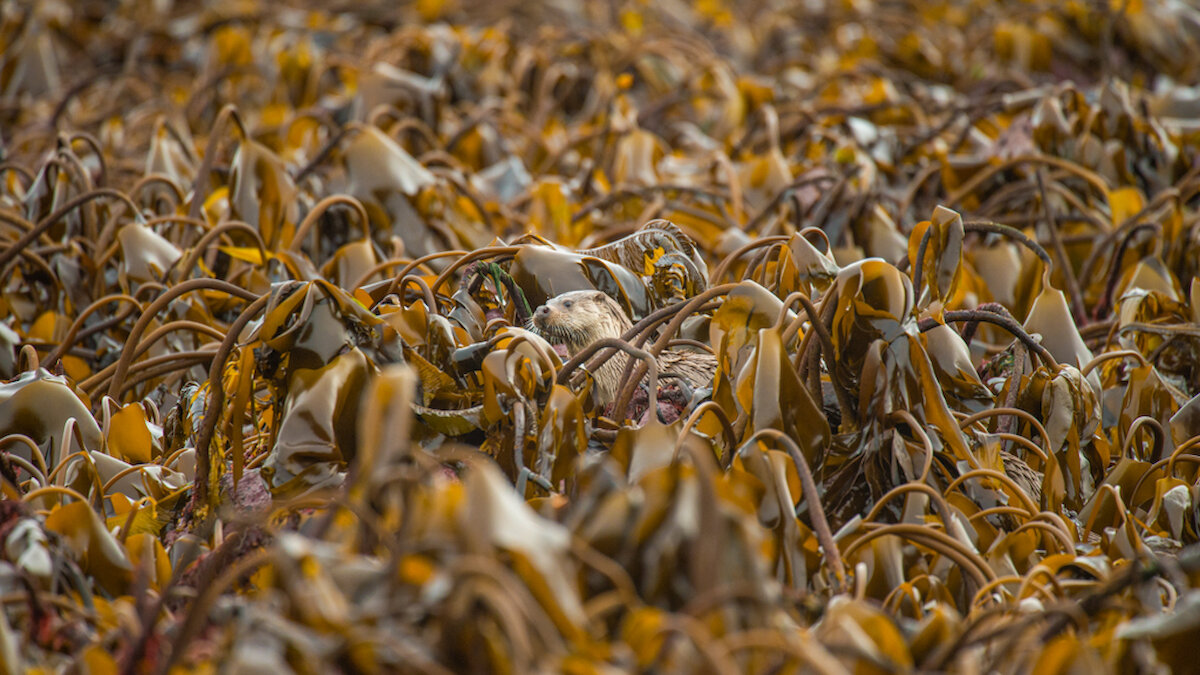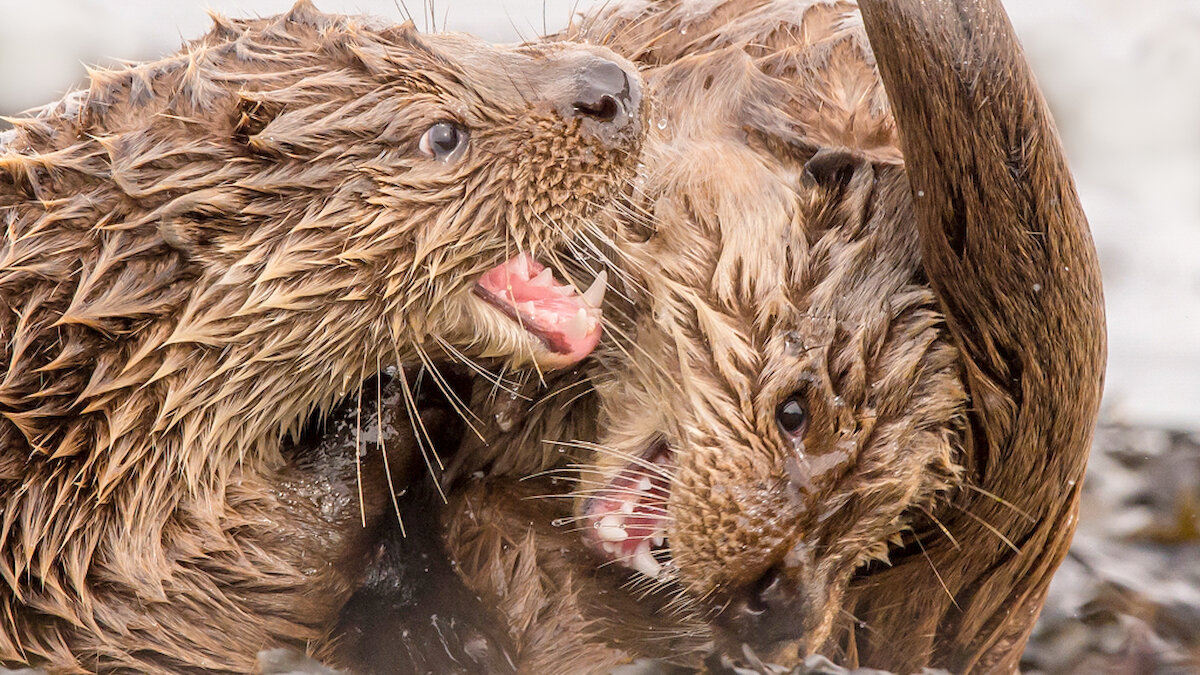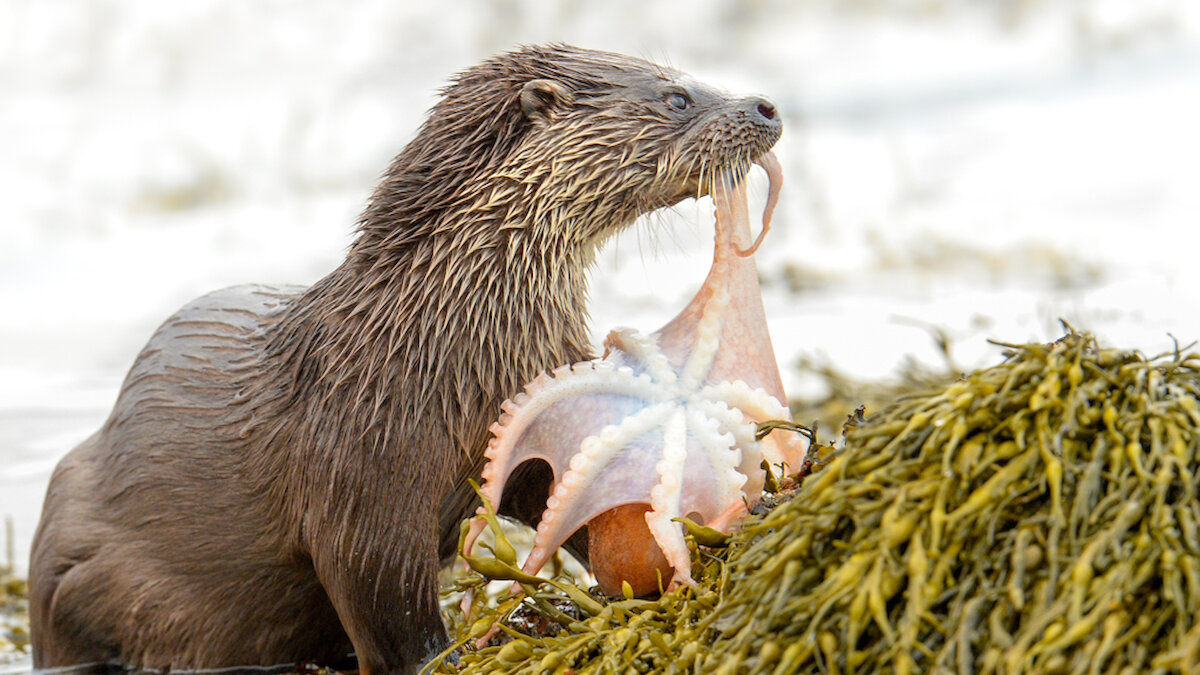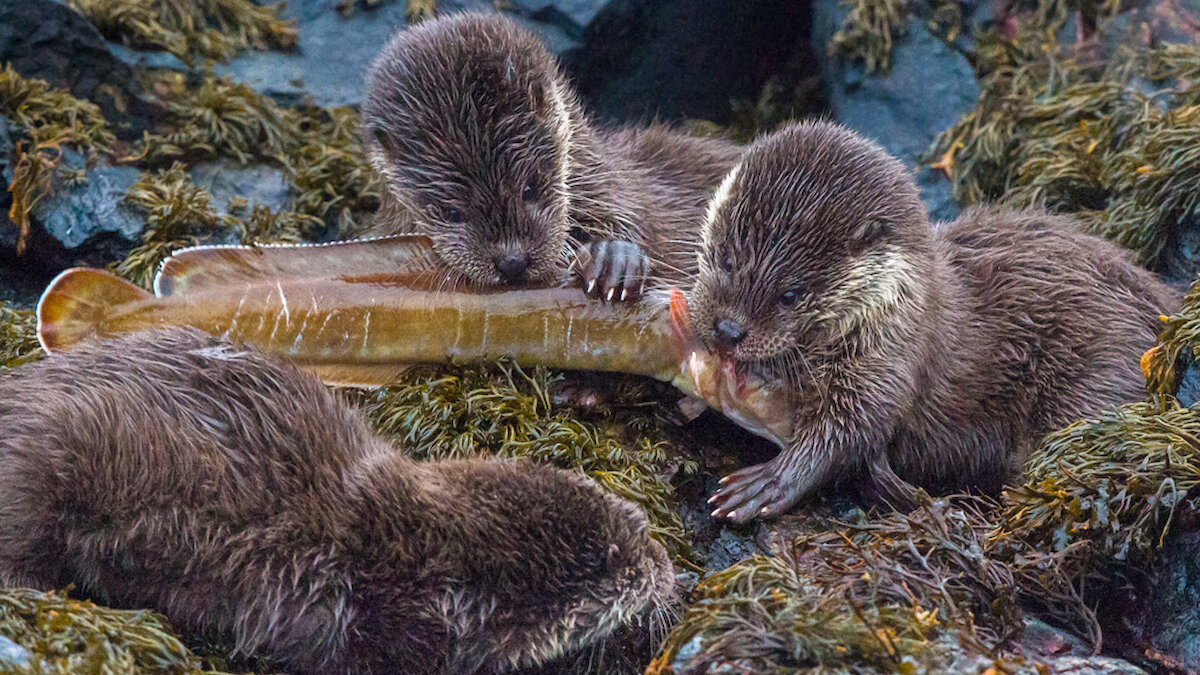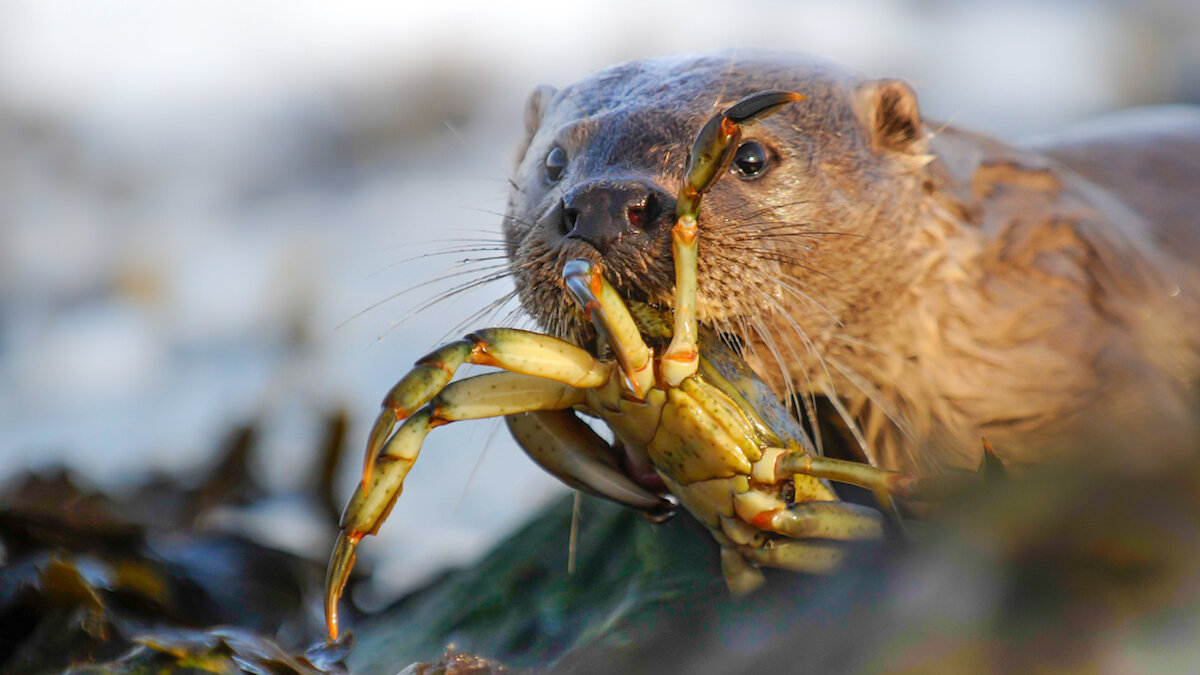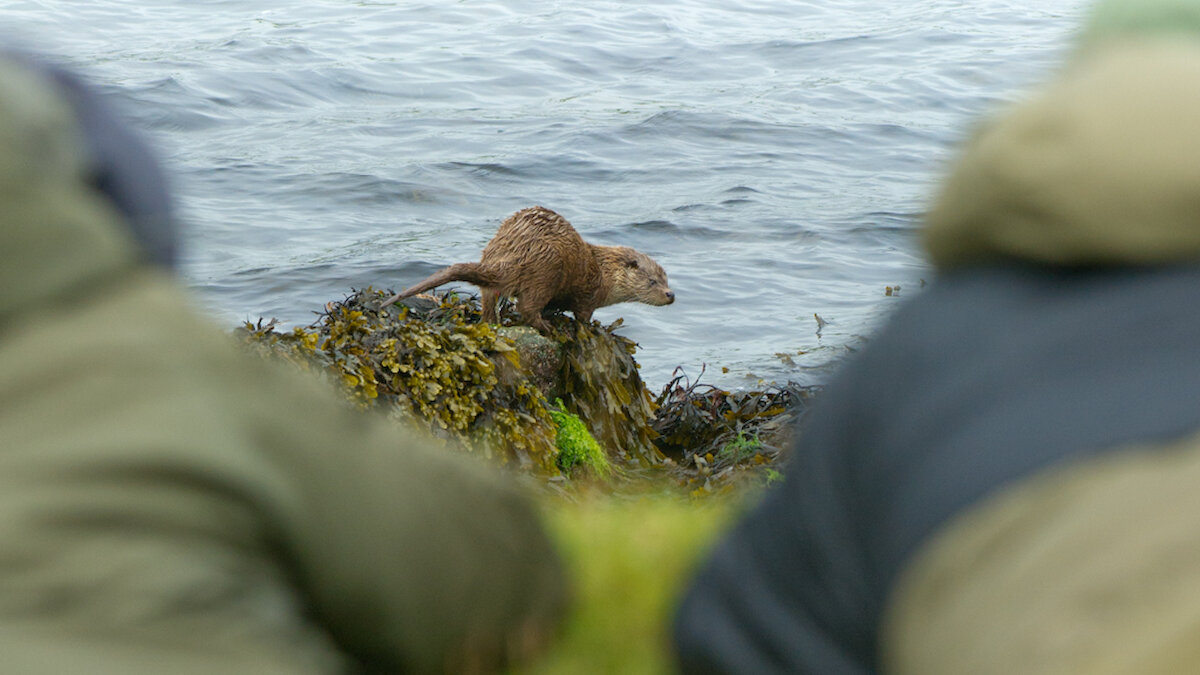There are around 800-1,000 otters living in Shetland – the highest density of otters in Europe. One of 13 species in the family group, ours are the same as found elsewhere across the continent, the Eurasian otter. Having been completely isolated for so long though, the genetics of Shetland otters differ slightly from those of other populations.
Generally, otters here tend to be slightly smaller than other Eurasian otters, but more noticeable than their size is the individually recognisable pale markings on their throat or chin that can make their appearance differ. This tends to be less commonly seen in otters elsewhere, yet each individual in Shetland shows it – a birth mark, one might say, and each one is unique.
These markings make it possible to identify and recognise individuals, allowing for fascinating insight and study into their lives. Learning this as an enthusiastic and aspiring young naturalist over 35 years ago helped me to know individuals, their routines and particularly how and where they lived along our coast, which formed the foundations of the work I do today.


